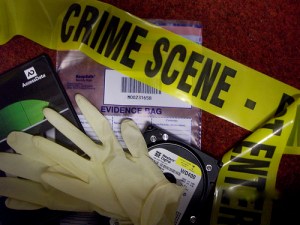While conducting research for my current novel DEAD BURN, I realized that there are some very interesting forensic facts that may or may not be widely known to most people. I have physical notebooks and online file folders filled with information that I might use in upcoming stories. Basically, I like to have more information than I’ll ever need, but these are good reminders for crime fiction writing.
This is for all you armchair CSI buffs or crime fiction authors:
ABO blood groups:
This is a blood group system that was first proposed by Karl Landsteiner, an Austrian biologist and physician, in 1900. The system consists of antigens, substance that produces an antibody, found on the surfaces of red blood cells and the corresponding antibodies in the serum.
The approximate percentage of the U.S. population blood type:
Type A (42%)
Type B (12%)
Type AB (3%)
Type O (43%)
Accidental Characteristics:
These are characteristics found in a specific material that are required by wear or by some accidental or other non-repeatable circumstance during the manufacture. It can also be described as a small defect, which gives a unique or “accidental” characteristic.
These characteristics can be found in tire treads, shoes, bullets, glass, plastic bags, and many other items. These characteristics are extremely important in the identification and comparison of evidence.
Adenine (A):
This is one of the four nucleotide bases the compose DNA.
Adipocere:
This grayish, wax-like substance forms from the result of the slow chemical reaction between body fat and water during the decomposition process.
Algor Mortis:
This is the rate of cooling of a body after death. It can be difficult to determine the time of death because many variables are taken into consideration, such as temperature, fat on victim, and the exposed area where the body was found. For more information, check out The Body Farm.
Amalgam:
This is the material used as filling for cavities or restorative dentistry. For identifying a victim, dental records are extremely effective.
Anthropometry:
This is a type of body measurement used to identify individuals. This term is often associated with a system of body measurements first developed by Alphonse Bertillon, a French law enforcement officer and biometrics researcher, for identification proposes, but it was replaced by fingerprinting in the early 1900s.
* * *




































Gosh, interesting stuff and that’s just ‘A’! Really useful info 🙂
LikeLike
Thank you! I appreciate your visit 🙂
LikeLike
Great post, Jennifer. Reminds me of the Criminal Justice classes I took. Now I’ll have to break out the paper I wrote on the L.A. County Coroners Office. Keep up the good work.
LikeLike
Thanks Ken 🙂 I love fun forensic tidbits.
LikeLike
Really fascinating and informative, thanks Jennifer. Really kind of you to share with us.
LikeLike
Thanks so much Jane for stopping by — it’s appreciated 🙂
LikeLike
You are most welcome, I am a crime addict and this was ambrosia to me….I will be back.
LikeLike
Most welcome. Enjoy your weekend. J x
LikeLike
I stop by often and enjoy your writing so much. I tend to read, digest and consider and then pop in again for another read and refresh of the material….as it is so very engaging. I cannot always leave a post but I am visiting. Jane x
LikeLike
Thanks so much Jane — I appreciate your visits 🙂
LikeLike
Interesting tidbits and now I am thinking I really need to know what my blood type is – just in case. Do most people know what they are? Such scientific terms for processes that if we were to encounter in real life most people would find horrifying…like adipocere.
LikeLike
Yes Donna it’s important to know your blood type… I didn’t know mine until I worked for a police department and was in a forensic internship (they required this). You can ask your doctor or you can obtain an easy kit with a prick of finger. Thanks for your comment 🙂
LikeLike
Technology has become law enforcement’s greatest weapon. I will never understand all of the nuances of forensics, but i certainly enjoy discovering about them in you novels.
LikeLike
Thanks Caleb 🙂 It seems that there’s always something new or updated. Wish I had more time to study these techniques!
LikeLike